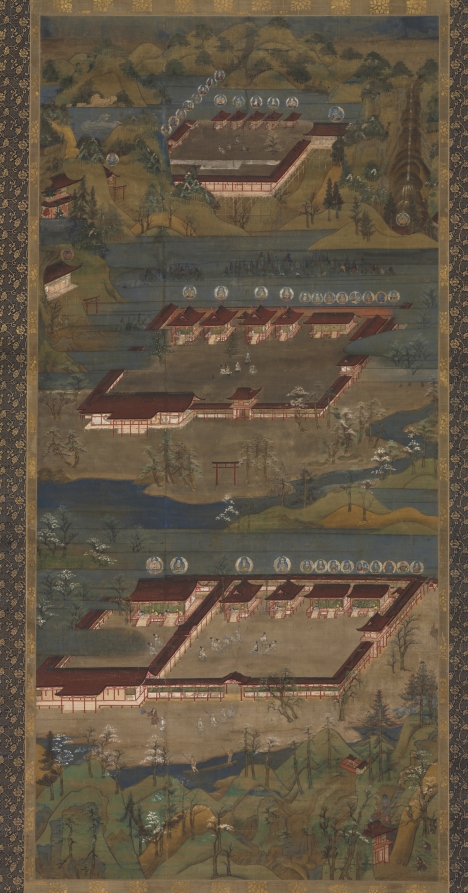Sinéad Vilbar, Curator of Japanese and Korean art
Cleveland Museum of Art
Site Specific: A Kumano Mandala Painting at the Cleveland Museum of Art
This event is sponsored by CEAS Committee on Japanese Studies
The Three Sacred Shrines at Kumano: Kumano Mandala. Japan, Kamakura period (1185-1333), ca. 1300. Hanging scroll; ink, color, and gold on silk and color on silk
The Cleveland Museum of Art, John L. Severance Fund 1953.16
Shinto-Buddhist combinatory art elucidates visually the medieval Japanese Buddhist theory of honjisuijaku, literally “original ground, flowing traces”, in which Buddhist deities manifest themselves as Shinto deities (kami) in order to communicate the Dharma to residents of Japan. The corpus of paintings comprising sacred site mandalas includes shrine mandalas (miya mandara), honjisuijaku mandalas, and pilgrimage mandalas (sankei mandara). Each has a number of pictorial conventions for conveying the combinatory nature of kami and Buddhist deity veneration. In many cases, natural or manmade features specific to particular sacred sites drive the compositions of the mandalas. This workshop presentation focuses on understanding representations of Kumano and its associated deities within the larger corpus of sacred site mandalas. Special attention is given to the composition of the Kumano Shrine Mandala in the collection of the Cleveland Museum of Art.
Persons with concerns regarding accessibility should please contact tingtingxu@uchicago.edu
